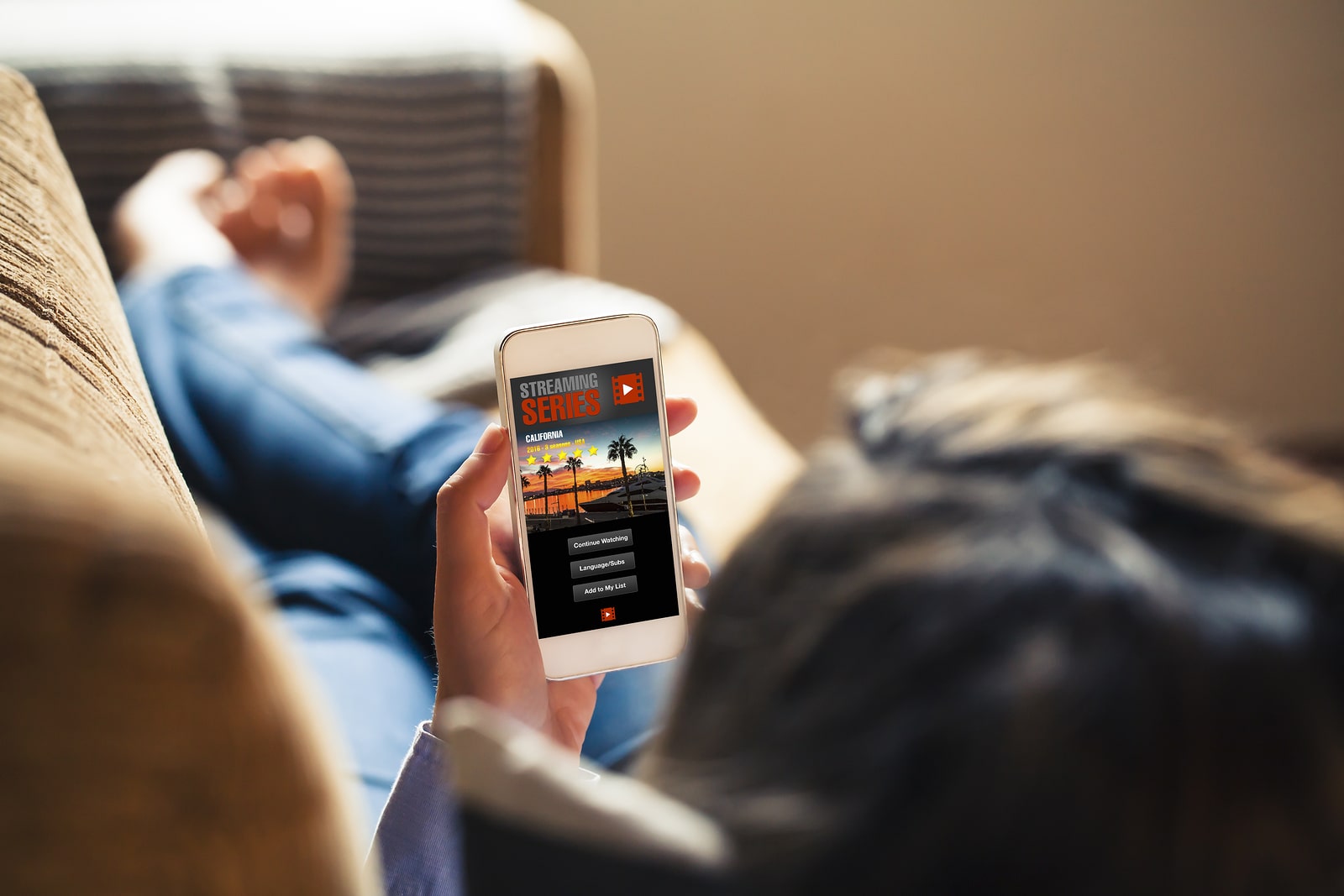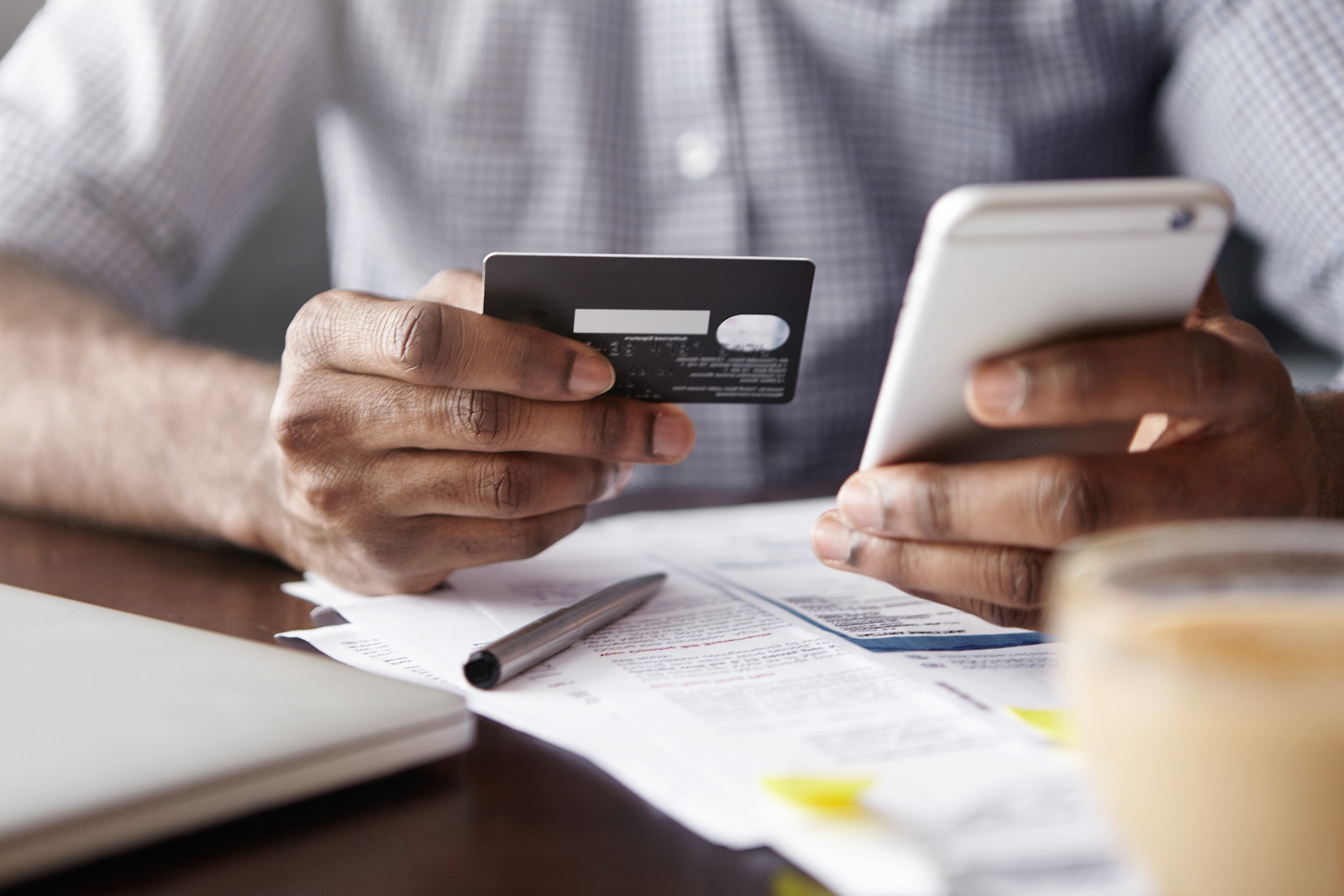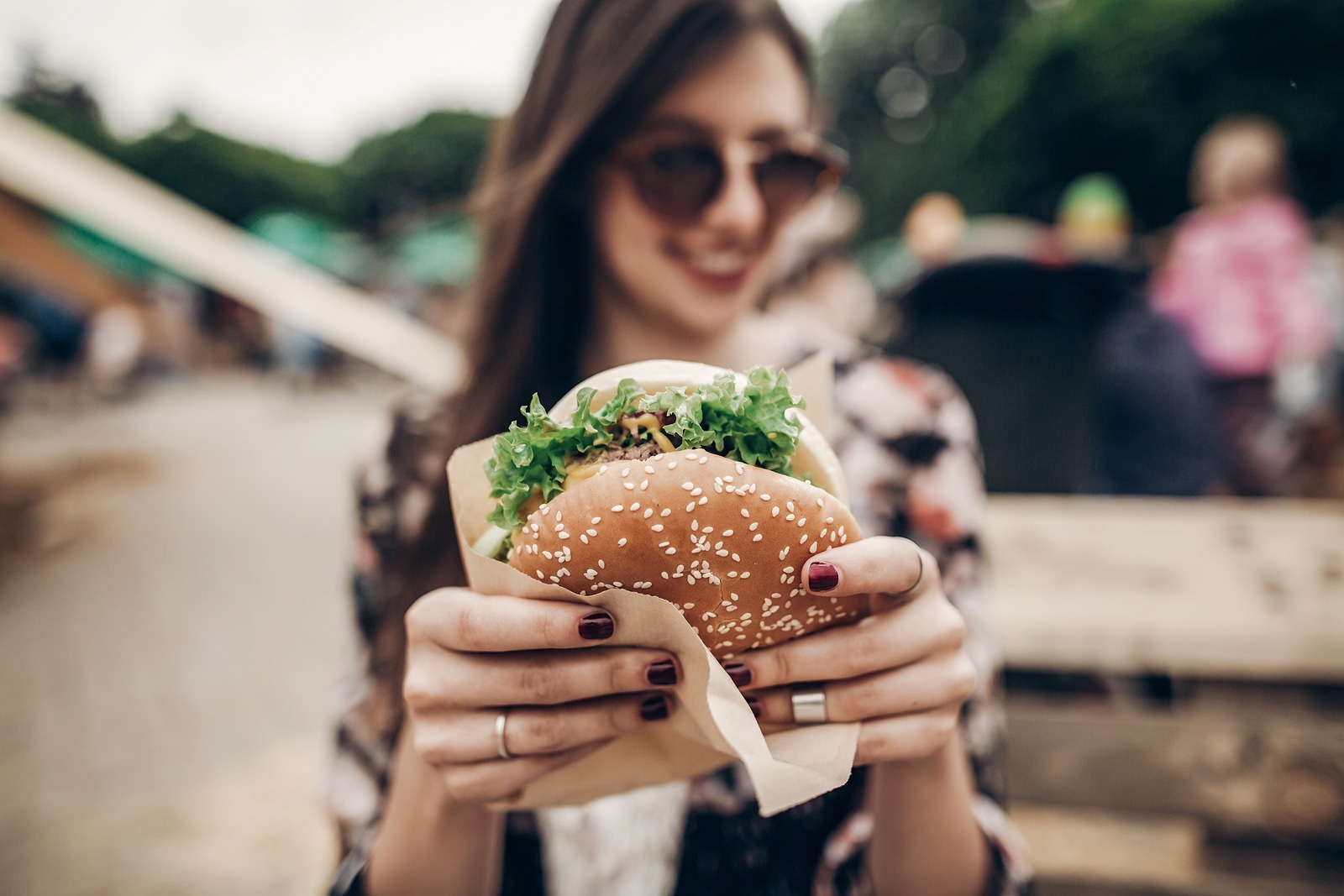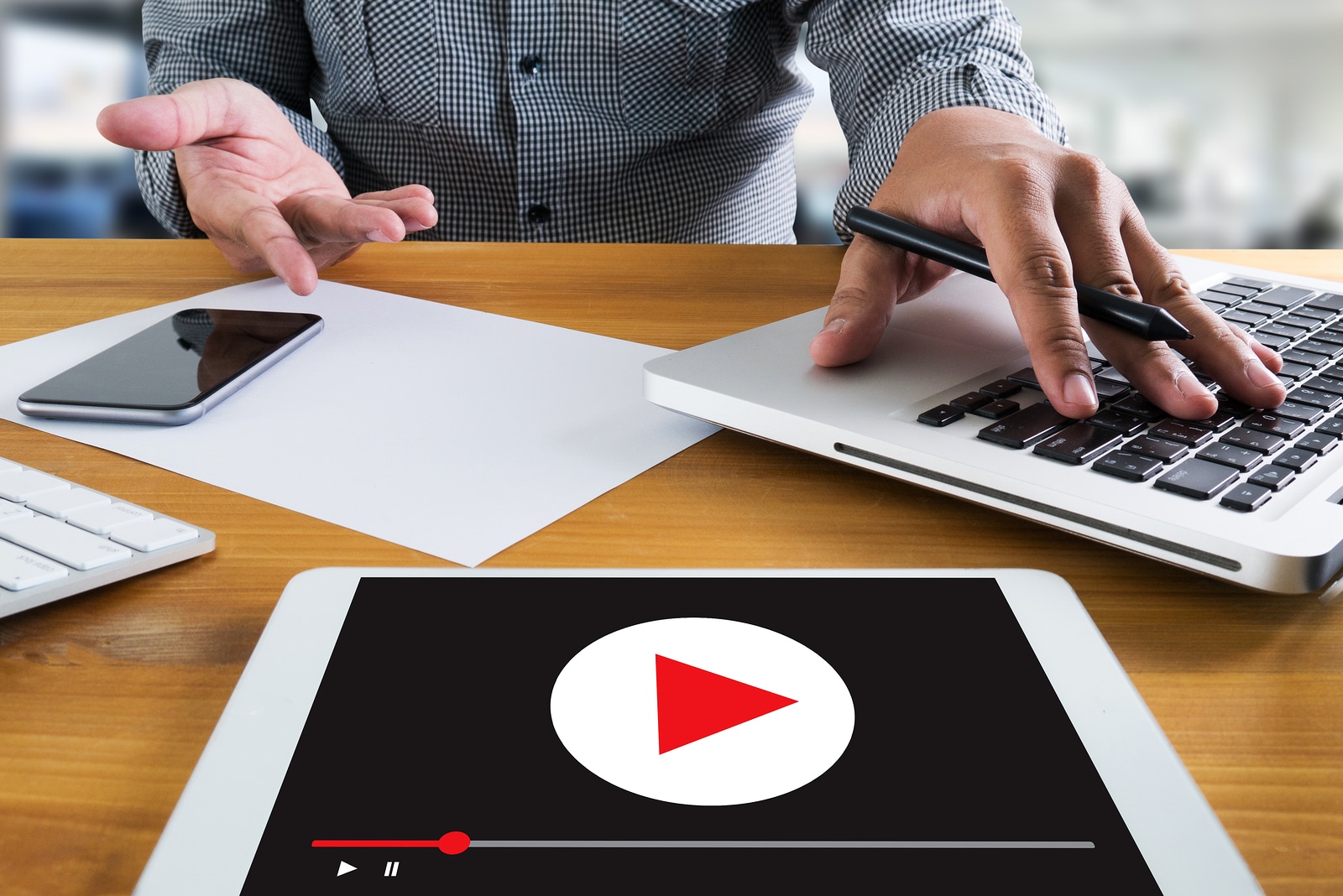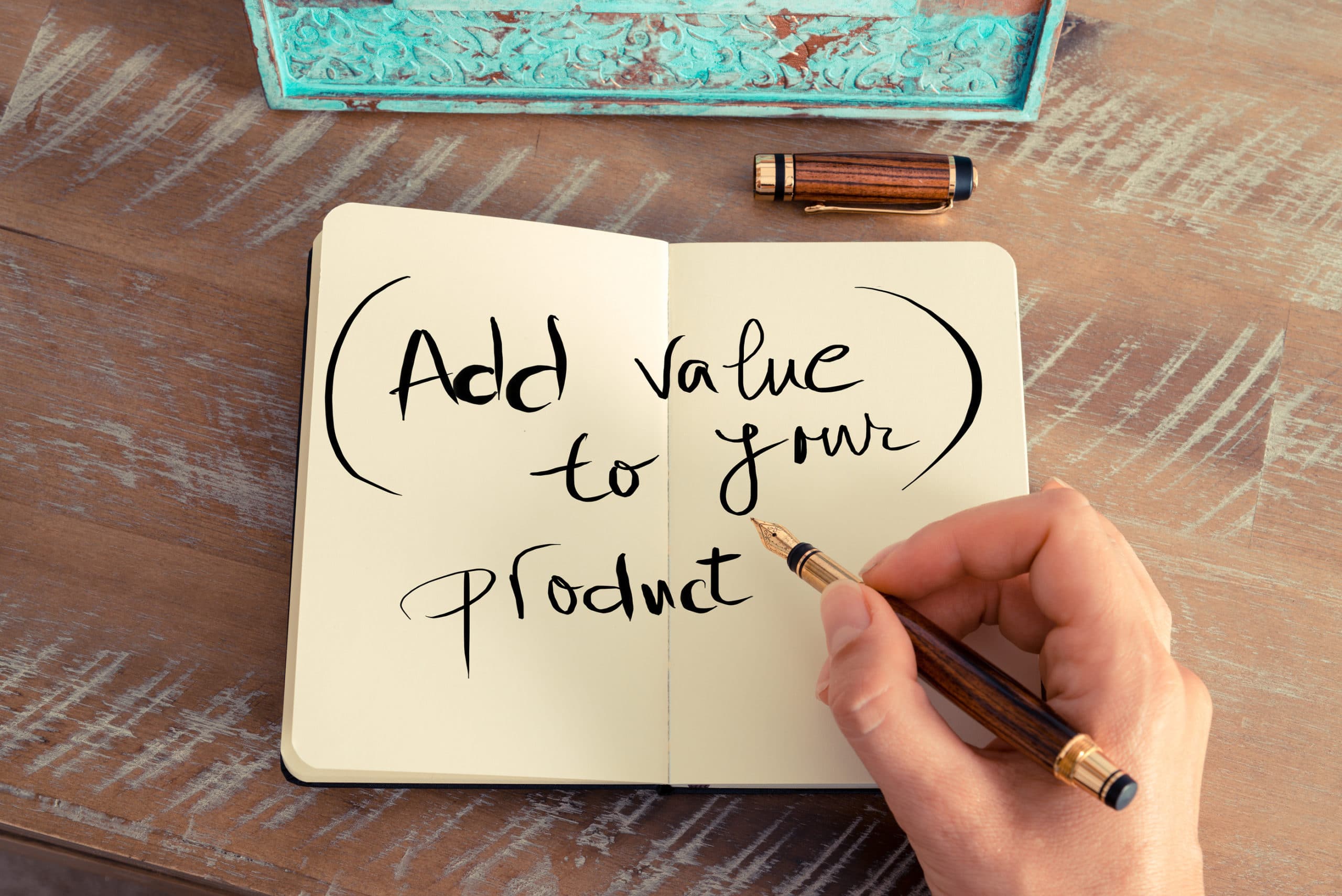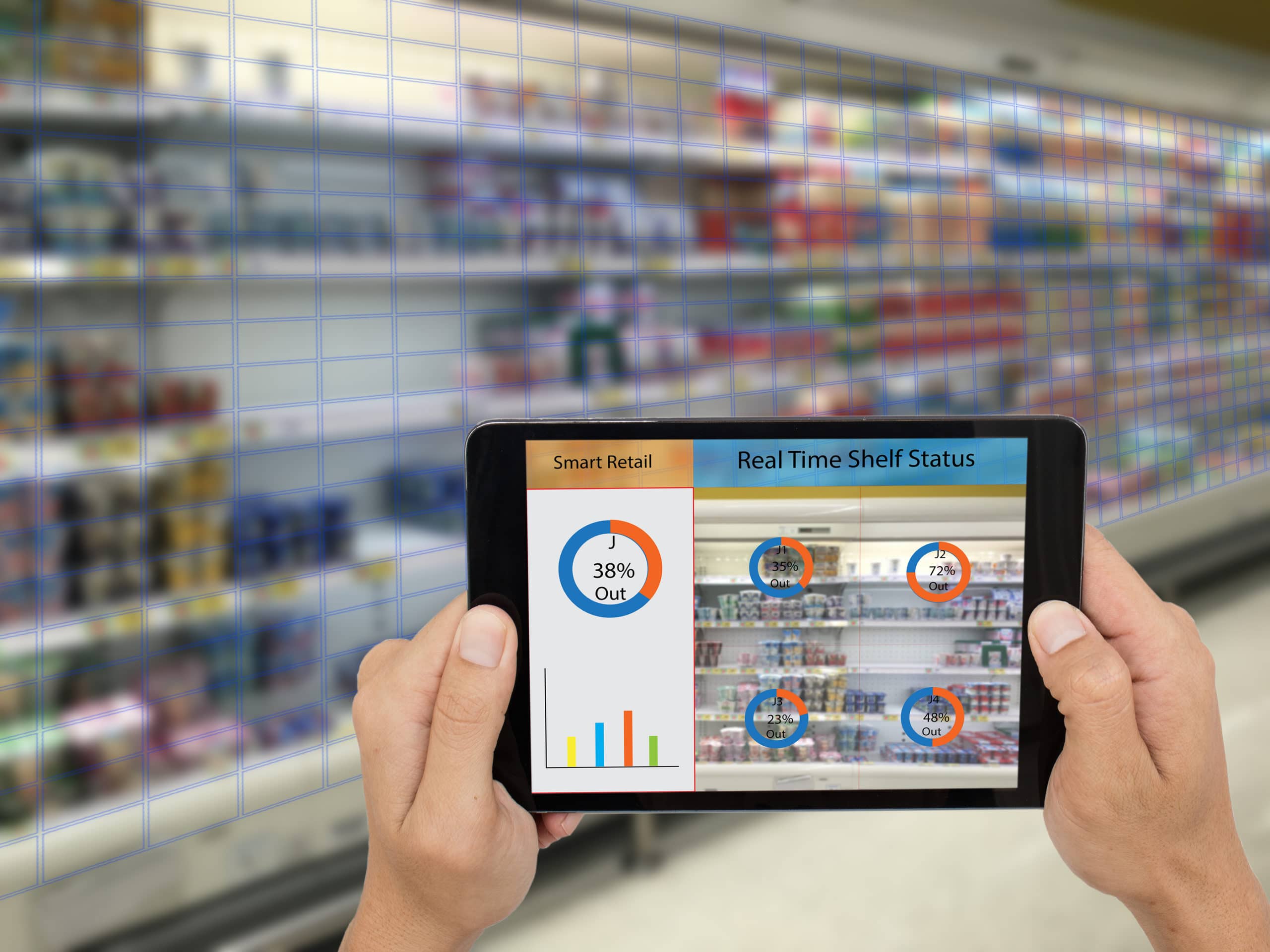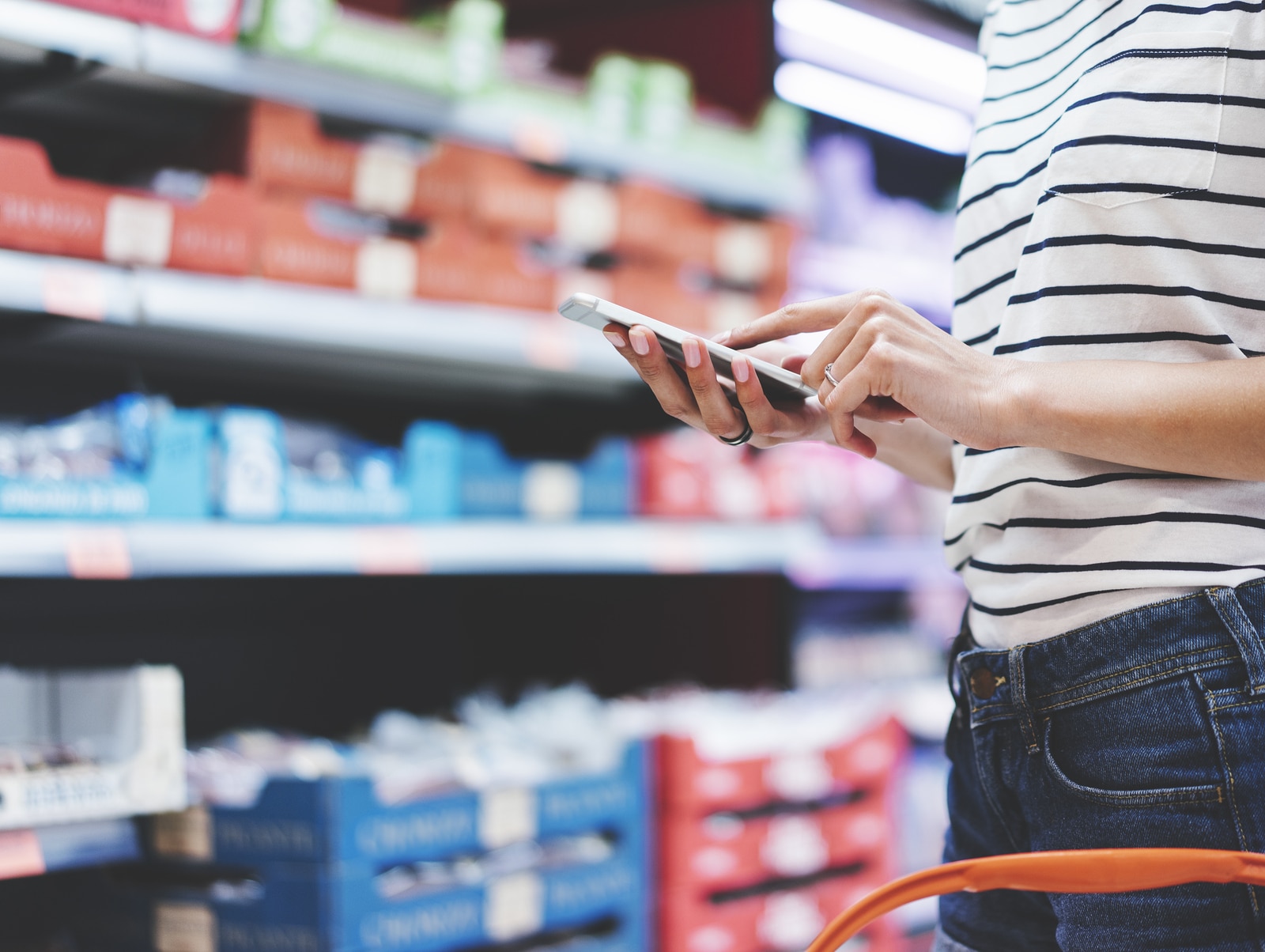Digital marketing is the solution managers often arrive at when they’re looking to increase a brand’s market share. Continue reading “How to increase market share of a brand in the digital age”
Category: b2b
The 3 reasons why video marketing works
When examining why video marketing works, brands need to think like a consumer. Continue reading “The 3 reasons why video marketing works”
The top 10 mobile commerce advantages and disadvantages
To those who view challenges as opportunities, the advantages and disadvantages of mobile commerce are one and the same. Continue reading “The top 10 mobile commerce advantages and disadvantages”
Understanding millennial spending habits as a QSR marketing professional
When it comes to millennial spending habits, quick service restaurants (QSR) are in a strong position. Millennials are more willing than other generations to eat out, with 79% reporting they regularly spend money eating at restaurants. As such, their habits are influencing how QSRs market their offerings. QSR marketing professionals need to understand millennials’ unique spending habits to best serve this market of consumers.
 Millennials offer a lot of opportunities for QSRs: They’re adventurous and willing to try new experiences when it comes to food. They view food as an experience, rather than mere fuel, and 81% of millennials report they examine new cultures through food. QSRs must also be willing to offer variety, affordability, and technology to truly connect with the millennial consumer.
Millennials offer a lot of opportunities for QSRs: They’re adventurous and willing to try new experiences when it comes to food. They view food as an experience, rather than mere fuel, and 81% of millennials report they examine new cultures through food. QSRs must also be willing to offer variety, affordability, and technology to truly connect with the millennial consumer.
Millennials: Open-minded and Seeking
Millennials don’t just view food as a necessity, they see it as an experience. QSRs must be prepared to deliver some kind of tasting experience through their food, and they need to highlight that in their marketing strategies. There are many ways to create a dining experience, including:
- Over the top: Millennials are more than willing to try items that might be seen as indulgent. About 63% of millennials report they enjoy it when a brand offers an over-the-top menu item.
- Cultural cuisine: Millennials are interested in exploring new cultures through cuisine. The recent emergence of QSRs focused on new cultural offerings, like Hawaiian and Indian foods, which were traditionally underrepresented in the QSR industry, seeks to address this interest.
- Nostalgia: Comfort food also attracts millennials who want to re-experience flavors from their childhood. About 69% of millennials wish brands would offer foods designed to remind them of their youth.
Millennials are adventurous eaters, which means QSR managers for offbeat chains have an even greater opportunity to attract new consumers in the cohort. Keep in mind, however, that millennials remain highly focused on convenience.
The Millennial Quest for Quick and Convenient
Millennials snack more than their other generational counterparts. That leads to a lot of opportunity in the QSR market, as these restaurants are uniquely positioned to provide snack foods in a hurry. We’ve already seen several brands move to leverage this through:
- Healthy-focused offerings: Millennials want to eat healthy, with about 67% reporting they seek healthy options at restaurants. Giving them a menu of quick, light snacks goes a long way towards gaining their loyalty.
- On-the-go options: Millennials tend to eat on their feet, in that they’re eating while going somewhere, or at their desks, or simply while walking down the street. Foods like wraps that consumers can eat on the go are great options.
- Multitask ready locations: While most millennials will eat off-premise, those who stay at a restaurant expect to have access to technology like WiFi, televisions and other display screens to keep them entertained. Using technology to enhance the QSR customers experience is becoming a necessity for restaurants seeking to cater to millennials.
On-the-go millennial consumers want to be able to eat quickly, yet when they do take time to sit down, they want to be entertained. Many QSRs are turning to technology to help in both improving the ordering process and in offering more in-restaurant entertainment options.
Maximizing on Millennial Spending Habits with Tech Driven Ordering Options
Millennials grew up with computers in their homes and came of age with the Internet, meaning that technology is an important part of their lives. In recent years, that need for tech has expanded into the QSR sector, as millennials seek out ways to make the ordering process more convenient.
Many QSRs have rolled out options to allow consumers to order via mobile phones and pick up their waiting order in person. These consumers can even pay by phone, further reducing wait times. As options like Uber Eats—a food delivery service that uses the ride-sharing app—become more popular, QSRs can even use them to offer delivery in new locations.
By leveraging mobile app advertising options, like shopping apps, QSRs can connect with millennials as they’re on the go
Another thing mobile technology can provide QSR marketing managers is marketing strategies with great potential for ROI. By leveraging mobile app advertising options, like shopping apps, QSRs can connect with millennials as they’re on the go and even share information on new products and offer rewards. With Shopkick, for example, a QSR can give a consumer rewards points just for walking in the door and can provide additional points for making certain purchases, all through a mobile-based platform.
Millennials are a very lucrative target market for QSRs because of how much money they spend eating out. They’re also willing to try new things, making it easier for brands to attract their attention—provided they offer millennials convenience and technology-based ordering. By using shopping apps, QSRs can even better capitalize on millennial spending habits and improve brand recognition and sales.
Shopkick helps our partners connect with millennial consumers as they’re on the go through our innovative app. To use our app to reach them, contact us.
Image courtesy Sonjachnyj
Three must know video marketing statistics
Knowing what your competitors are doing in terms of marketing initiatives is one of the key parts of building a campaign, and you can gain a lot of insight from video marketing statistics for 2018. Understanding competitors’ practices reveals how they’re reaching out to consumers and, sometimes, what you should be trying as well. Using these statistics can help brands develop ideas for differentiation. Video marketing statistics reveal what others in the industry are doing and how a brand can stand out in an attempt to gain market share.
 Choosing a slant, an audience, and a platform for video ads can be a challenge for brands, as the number of choices can almost overwhelm. There are thousands of platforms and audiences to approach and millions of ways to deliver messages. Brands need to be able to segment themselves and find the ideal place to share their category of goods. Gaining insight from three key video marketing statistics can help guide and improve your video marketing decisions.
Choosing a slant, an audience, and a platform for video ads can be a challenge for brands, as the number of choices can almost overwhelm. There are thousands of platforms and audiences to approach and millions of ways to deliver messages. Brands need to be able to segment themselves and find the ideal place to share their category of goods. Gaining insight from three key video marketing statistics can help guide and improve your video marketing decisions.
Video Marketing Statistic #1: Marketers Are Increasing Focus on Video
Most marketers plan on boosting their budgets for video marketing in 2018. In one survey, about 85% of digital marketing professionals plan on increasing their investment in video in 2018. That’s across all major platforms, including:
- Social media: About 61% of mobile marketers plan to use social media sites like Facebook, Instagram, and Twitter to share video advertising this year. The rapid increase in marketers using video advertising on social media platforms could be due to the increased development of native platforms within these sites. Facebook is one such site that is increasing its support in video, to include adding options for mobile video. The increased access to social platform video support is a driving factor for why so many brands are choosing to leverage it.
- In-app advertising: Marketers are also looking to in-app advertising for mobile video, where advertisements appear while consumers are using apps. This category also accounts for shopping apps, like Shopkick, which are seeing a rapid increase in popularity with consumers.
- Branded video advertising: Brands making their own videos and hosting them on their own sites will also grow this year. When a landing page includes a video, it’s estimated that up to 86% of users will go on to view additional site content after viewing the video. This is a key factor in why brands are upping their native video content production.
Of course, there are a few downsides to increased video advertising spending. First, many brands will find it more difficult to gain attention as competitors also roll out video offerings. In addition, increased ad spending on video advertising has also increased the risk of fraud.
Video Marketing Statistic #2: Scammers Now Focused on Video
Video is becoming a prime target for ad fraud as it has become a lucrative area for scammers. Video makes up about half, 45%, of ad spend for companies, but it accounts for 64% of ad fraud. This fraud occurs several ways:
- Pre-roll mislabeling: In video advertising, a brand can purchase advertisements to run prior to editorial content, often referred to as pre-roll. In some cases, however, a disreputable firm may instead play video in a pop-up window, with no editorial content. The issue with this is that advertisers will pay for a more expensive editorial spot with high conversion potential but will instead get impressions from one of these low conversion potential pop-up windows.
- False traffic: In this style of advertising fraud, fraudsters set up bot networks that send fake traffic to view videos. The advertiser pays for real, human traffic, but instead gets machine generated traffic.
- Piracy: Piracy, in relation to ad fraud, comes when sites deliver pirated content at the expense of legitimate sponsors. In 2016, digital ad revenue from content that infringed on copyrights reached $111 million, forcing many online advertising organizations to begin cracking down on copyright violations.
- False completions: Fraud also occurs when a viewer scrolls through a feed and sees only 2 seconds of a 30 second video, yet the marketer is charged for a full 30-second view.
It can be difficult to fight these types of fraud because spotting them can be a challenge. To avoid paying for fraudulent ads, companies should work with marketers that hold industry credentials, like TAG and MRC certifications. Those credentials show that a company has met certain standards, so brands can trust the methods they use for gaining and measuring traffic. This is especially important for brands as video viewing switches to mobile devices.
Video Marketing Statistic #3: Mobile Makes the Difference
Mobile video advertisements grew by more than one-third in 2017, and it was reported that consumers spend around half an hour every day viewing these advertisements. It appears that mobile video demand and supply are increasing simultaneously, as consumers seek more mobile content and brands hustle to deliver it.
One way to stand out with mobile video advertising is to take an in-app based approach.
Mobile video advertising is in a massive growth phase right now, which is why brands need to seek unique ways to leverage it. An influx of innovative new advertising platforms makes for exceptional opportunities for brands, as it’s possible to get in on the best advertising platforms while they’re still in their infancy—before they’re overrun by competition. One way to stand out with mobile video advertising is to take an in-app based approach, such as with shopping apps that allow brands to share video advertising in a platform that leverages multiple strategies for incentivizing sales.
These video marketing statistics for 2018 provide insight on what the competition is doing in terms of ad spending. They also show us areas of risk—like increased ad fraud—and reveal what platforms to focus on. Understanding what is driving competitors to take the steps they do with video lends insights brands can utilize in their own marketing campaigns.
Shopkick is heavily focused on the impact of video and offers our partners the opportunity to leverage it through the power of mobile apps. For more information, contact us.
Image courtesy of Onephoto
Is CPG advertising ready for the digital age of shopping?
In CPG advertising in the past, much of the marketing was done through retailers via in-store advertisements and shelf placement. Retailers acted as middlemen that passed the CPG products to the masses. Direct to consumer sales was not an area most CPG brands spent time on. That all changed with the arrival of the digital age of shopping, where CPG brands are able to reach consumers directly. Massive platforms like Amazon now allow companies to place their products but, for the most part, don’t take responsibility for the advertising of those products. Here then, many CPG brands are unprepared to compete because they’re unaware of how to gain the most advantageous digital shelf space.
 Whether customers purchase a product from an online market, buy it direct, or just learn about it online, most CPG brands are going to experience some level of online interaction with a product prior to a sale. Many CPG brands are struggling to get past the days when advertising was one-sided and did not require engagement with consumers. However, some of the most traditional CPG brands have found ways to stay relevant and develop rapport with consumers by advertising as much as major retailers. By taking a consumer-first approach to CPG advertising, brands will be better able to adjust to the market as consumer behaviors change.
Whether customers purchase a product from an online market, buy it direct, or just learn about it online, most CPG brands are going to experience some level of online interaction with a product prior to a sale. Many CPG brands are struggling to get past the days when advertising was one-sided and did not require engagement with consumers. However, some of the most traditional CPG brands have found ways to stay relevant and develop rapport with consumers by advertising as much as major retailers. By taking a consumer-first approach to CPG advertising, brands will be better able to adjust to the market as consumer behaviors change.
The CPG Industry’s Slow Progress to Digital Sales
Many industries made the transition to the Internet so quickly that certain positions became obsolete. Think of the travel industry, where travel agents quickly found themselves displaced by online flight scheduling websites. This was because the Internet changed who the gatekeepers were—an impact felt in just about every industry. One category of goods, however—the CPG category—remained primarily offline until the early 2000s for several reasons, including:
- Market segmentation: The CPG market is unique because of how many products it encompasses. The companies behind those products are as diverse as the products they represent. Small challenger brands that provide niche products are competing with large global conglomerates with thousands of items in their portfolios.
- Retail limitations: CPG products were traditionally viewed as items to be sold through a retailer. In the early days of the Internet, there was little point in CPG brands attempting to garner direct sales specifically because of the product distribution models that existed for brands at the time.
- Shipping costs: CPG products tend to have low price points, many times so low that the cost of shipping would actually exceed the cost of the product. As such, purchasing a single CPG product online then having it shipped made little fiscal sense to either consumers or brands.
Advances in technology helped CPG brands overcome these barriers to entry. E-commerce websites made it easy to browse and buy products while consolidating shipping costs. Stores began relying on mobile to help consumers browse their shelves and order items for pickup. Geotracking and digital marketing now offer opportunities for brands to target consumers more specifically. It’s clear the digital market has adjusted itself for the entry of CPG brands. Now, CPG brands need to reevaluate their advertising to determine if their company is ready to take advantage of those adjustments.
CPG Advertising Success With Direct to Consumer Strategies
One nearly iconic detergent company was able to stand out in its category by shifting its focus from advertising at consumers to engaging with them. About two years ago, the Clorox Company chose to focus heavily on digital commerce and increased business in that channel by 50%. They used mobile advertising and social media campaigns and worked with digital platforms directly to increase sales in this category.
This CPG marketing strategy was done in anticipation of the digital sales route growing. The company is now connecting with the consumers directly on the same level as retailers like Walmart, Target, and CVS. By shifting advertising strategies to engage directly with consumers, rather than going through a retailer, brands can create a lasting connection with the consumer, regardless of where they do their shopping. Often, these advertising strategies center around:
- Being tech forward: One of the key people in the Clorox story was their chief marketing officer, who was intensely focused on the future of ordering. He was heavily invested in emerging technology and solutions like voice-based ordering and smart speaker advertising. His focus was not because these programs are big now, but rather due to a belief that they would be major avenues of purchase 10 years in the future. Delivering a new consumer experience, before the consumer even knows they want it, is an essential step for brands that want to stand out.
- Engaging consumers in-store: Many CPG brands are using shopping apps to engage with the consumer as they’re in the shopping aisle. Using incentives like rewards points delivered via a mobile app is a strategy that works for CPG brands, who get even more of a return than a discount might offer, without the same margin impact the discount would have. This is because consumers often perceive rewards points as having greater value than their actual dollar amount. That’s in part a result of the emotional return they provide. Shopkick, for example, offers a gamified app that consumers can use to scan and purchase items in-store and online and gain kicks that can be exchanged for gift cards. This engages the consumer twice: at the time of purchase and when they’re trading in those points for the gift card.
- Going direct to consumer: This is one of the biggest shifts in today’s CPG marketing trends. In the past, consumers had to go to the CPG brand, seeking out a favorite brand’s product in the store. This created a challenge because the first time the consumer saw the brand’s product was when it was on the shelf, next to competitors, many of which were lower cost or more visibly prominent. Today, CPG brands can proactively engage these consumers before they reach the store, which helps the product stand out. For example, brands can connect with consumers directly on social media channels and via mobile apps.
CPG advertising strategies need to be designed to work both in brick-and-mortar locations and through digital platforms in order to capitalize on an increasing direct sales market. Advertising should travel to the consumer rather than wait for the consumer to come to the brand. By connecting with consumers via mobile apps, social media, and other digital avenues, brands can proactively reach their target market.
CPG brands need to be prepared to move faster in developing their marketing strategies than they did in the past, in part because consumers’ physical and digital worlds are starting to merge. Using mobile app-based marketing as part of a consumer engagement campaign can help position CPG advertising to meet the demands of shoppers in the digital age.
Shopkick offers our partners the ability to travel with consumers through an engaging app designed to drive sales in the store and online. For more information, contact us.
Image courtesy of Rawpixel.com
Added value marketing: 3 easy ways to incentivize your customers
A win-win for both a brand and its customers, added value marketing offers the consumer many more incentives and rewards than standard marketing does, while simultaneously costing the brand very little compared to other advertising methods.
 Added value marketing—commonly referred to as value-added marketing—is a strategic method of advertising used for building brand affinity. It creates a connection with the customer that increases their receptiveness to a brand’s message. However, while many marketing materials might fit the mold of added value, not all will offer the same impact. Modern CPG marketing trends show that any approach to advertising must be more than just a sales pitch. Added value marketing needs to offer information about the company, incentivize consumers to share the brand’s message, and, perhaps most importantly, explain how the product solves a consumer’s problem.
Added value marketing—commonly referred to as value-added marketing—is a strategic method of advertising used for building brand affinity. It creates a connection with the customer that increases their receptiveness to a brand’s message. However, while many marketing materials might fit the mold of added value, not all will offer the same impact. Modern CPG marketing trends show that any approach to advertising must be more than just a sales pitch. Added value marketing needs to offer information about the company, incentivize consumers to share the brand’s message, and, perhaps most importantly, explain how the product solves a consumer’s problem.
The concept of added value is a marketing strategy based on perception; the value usually can’t be measured in dollars and cents. Instead, it’s measured in how much the customer values what they’re being offered. As such, added value marketing can be a bit difficult to manage and assess effectively. However, when successful, it can offer a major boost to a brand’s reputation—and its bottom line.
Provide Digital Collateral Materials
Collateral materials refer to any marketing materials that accompany a product; they support a sale by clearly introducing a company and a product to a consumer considering a purchase. This is a very broad concept that can be applied to a wide range of platforms.
Traditionally, these marketing materials have accompanied more expensive items. However, digital channels have made this a more accessible approach to added value marketing for products at every price point.
Marketing materials can now be used to add value to a purchase and reach consumers while they’re in the shopping aisle via:
- In-store digital displays: In-store digital displays can be used to showcase the history of a company or information about a new product. A case study for this approach comes from a popular makeup brand. The brand offered in-store digital displays featuring several social media influencers demonstrating the use of new products. The company was able to leverage the power of social media to add value, aka a tutorial, to the makeup purchase experience.
- Mobile demonstrations: A well-known soap company chose to offer a mobile video experience so that potential buyers could compare for themselves the results of using the company’s products versus their competitors’. The quick video clips were offered on a mobile app as well as via the brand’s social media pages. They were inexpensive to make and resulted in an increased consumer interest in the brand.
- Downloadable eBooks: eBooks, online tutorials, and downloadable PDF guides can provide information and instructions for a product’s use while minimizing the cost of supplying these materials to the consumer. If these marketing materials are available to the consumer before purchase, they can help to increase sales, essentially advocating for a sale of the product on behalf of the company.
Digital collateral allows a brand to connect with consumers in the purchase moment. This creates a more personal experience, one that encourages the consumer to spread a brand’s message. It’s a standard customer relationship building strategy that establishes the company as a subject matter expert.
Incentivize Brand Ambassadorship
Brand ambassadors are quite possibly a brand’s most valuable customers. Why? Other consumers trust them. In one study, it was noted that 84% of consumers trust online customer reviews as much as they trust the recommendations of friends. The reason for this is that they consider other, anonymous consumers to be unbiased.
Cultivating brand ambassador relationships is something which any brand can take part in and it doesn’t require a large investment—or even the endorsement of a well-known person. Here are a few ways to create and encourage brand ambassadors:
- Sweeps for shares: Social media shares are a highly effective way to earn attention for a product or brand. However, getting consumers to share social media ads can be a challenge if something isn’t offered in return. Many companies use online raffles, or sweeps,›› that offer consumers the digital version of a raffle ticket in exchange for sharing a post. This is an easily scalable added value technique that often only requires giving away a single free sample product to the winner of the raffle.
- Referral bonuses: When a customer refers someone to a product, they should be recognized. Shopkick, a shopping app which rewards points to consumers for interacting with brands, leverages this tactic by offering additional points to its users each time they refer a new active user to the app. This approach is highly successful at creating consistent user base growth.
- Online parties and events: One way to gain brand ambassadors and social media shares is to have a scheduled online event where users can ask questions in real time, get to know other users, and gain insider information on a company. It works to humanize a brand and encourages engagement and excitement for a product.
Incentivizing individuals to spread a brand’s message does not have to be an expensive approach to added value marketing. Again, this incentive is all about perception. If the consumer perceives value in spending their time sharing a brand, they’ll participate. They’re more likely to do this when they view a brand not just as a company, but as a company that cares.
Helping Rather Than Selling In Added Value Marketing
Added value marketing focuses not on selling to the consumer but, instead, on helping them. Brands should consider the desired uses of a product and why a consumer would turn to their brand specifically. Offering the answer to a consumer’s problem is a way to build brand affinity. That affinity is something the consumer views as added value; when they purchase a product, they’re not just getting a product, but also the expertise of the company behind that product.
Brands can incentivize consumers via added value marketing in a way that provides an emotional connection rather than an immediate monetary return. It’s about consumers trusting a brand. That trust comes from giving them important information about a company and its products, incentivizing consumers to share the brand’s message, and offering marketing that helps them, rather than simply sells to them.
Shopkick helps our partners provide superior value through its shopping app that gives users kicks for engaging with brands. For more information on how our app incentivizes customers, contact our team today.
Image courtesy StanciuC
Grocery retail apps: Why they attract millennials to CPG brands
Gaining millennial interest for a CPG brand is a common challenge marketers face. Grocery retail apps could be the answer. Millennial purchase behaviors are often erratic, not due to the fact that millennials themselves are erratic, but because of their reliance on technology.
 Currently, millennials make up one of the largest buying groups in existence. Understanding their behavior is the key for CPG brands to maintain their relevance and their market share in today’s crowded marketplace. Millennials are the first generation to grow up with access to the internet. They use it as a tool to influence their everyday purchase decisions. Because of that fact, the internet has a profound impact on their buying behaviors.
Currently, millennials make up one of the largest buying groups in existence. Understanding their behavior is the key for CPG brands to maintain their relevance and their market share in today’s crowded marketplace. Millennials are the first generation to grow up with access to the internet. They use it as a tool to influence their everyday purchase decisions. Because of that fact, the internet has a profound impact on their buying behaviors.
CPG brands that want to attract their attention must be willing to do so through technology—specifically, through retail in-store apps. Grocery retail apps can help a brand connect with a millennial audience, often simply by being conveniently available to consult as they make their purchase decisions.
How Millennials Shifted the Marketing Paradigm
Chances are, you’ve noticed how important the smartphone is to millennials. The average millennial touches their phone 150 times a day. This behavior doesn’t mean they’re addicted to their cell phones, per se; instead, it’s due to the fact that the smartphone is this generation’s television. It doesn’t just provide entertainment, it connects them to the world.
Millennial-focused marketing is a major paradigm shift for many marketing and advertising professionals because social media and digital marketing have created a more transparent and direct connection between brands and these consumers. Millennial shoppers also have more access to information period, whether that information is about international politics, financial matters, or new trends and products. Because of the major role the internet has played in their lives, millennials typically are:
- Socially responsible: The first Earth Day was held in 1970 but it didn’t gain widespread popularity until the early 80s, which is when the first millennials were born. Millennials grew up with an environmental conscientiousness that wasn’t seen in generations that came before them. As a result, brands that focus on digital marketing, which does not unnecessarily waste resources, tend to resonate well with them.
- Fiscally savvy: About one-third of millennials have a financial or savings plan in place. That far exceeds the planning of older generations, including Generation X and even baby boomers. Millennials seem to have learned from the mistakes of those who came before them, planning for retirement early and keeping unnecessary spending down.
- Highly sensitive to scarcity: Because of their easy ability to access up-to-the-minute information on just about everything, millennials are more easily impacted by scarcity, otherwise known as the “fear of missing out,” or FOMO.
Millennials depend on technology to help them make informed decisions. They are open about sharing their signals of purchase intent if it makes their brand experience better. In the past, the internet may have been used as a resource for researching high-ticket items. However, because millennials live in an age flush with accessible data, even their small dollar purchase decisions are likely to be impacted by the abundance of information they can conveniently access. This is why grocery apps act as such a major persuader to the millennial market.
Using Grocery Retail Apps to Impact Millennial Purchase Decisions
Millennials don’t just want to buy from a brand; they want to create a relationship with that brand. They are attracted by brand awareness campaigns that create a real and genuine relationship. This is why mobile marketing is such a powerful purchase influencer for them as it:
- Offers Rewards: Apps like Shopkick, a retail shopping rewards app, provide recognition for making smart purchase decisions in the form of reward points that users can later redeem for gift cards. This acts as an efficient purchase driver as, often, the perceived value of these kicks is even higher than the dollar amount they cost marketers.
- Creates a social environment: Users of grocery shopping apps, like Shopkick, are encouraged to share their shopping and saving experiences online via Facebook and other popular social platforms. This creates a community of fiscally savvy consumers who discuss money-saving tips.
- Communicates in the moment: As already discussed, millennial consumers touch their phones hundreds of times a day. An app that can connect with them as they’re in the shopping aisle is extraordinarily effective for gaining brand recognition.
- Extends social responsibility: Digital apps offer a benefit that paper circulars and advertising materials can’t: They’re scalable and responsible. That means that millennials don’t have to worry about the waste involved with paper coupons or offers—and brands don’t have to spend money printing materials.
Today’s millennial consumers are not coupon clippers, but they are fiscally intelligent. They want to save money while they’re saving the environment. This is why grocery retail apps are so appealing to this group. They allow shoppers to collect the rewards that make them feel fiscally responsible while limiting the waste of paper coupons or rebates.
Millennial shoppers are informed shoppers. They don’t want to just buy from a CPG brand, they want to know more about the brand than the product they sell. They want to know where that product came from, how it was sourced, and how it can make their lives better. Marketing to the millennial consumer is therefore not just about sales; it’s about providing a free exchange of information. Using technology, brands can better express their sustainability methods, money-saving ideas, and incentivized sales in a way that truly resonates with these new consumers.
Shopkick offers a platform for fiscally savvy millennials to explore while our partners get the opportunity to interact more thoroughly with this unique consumer base. For more information on how our platform creates relationships with today’s millennial consumer, contact us today.
Image courtesy GeorgeRudy
CPG retail analytics: How consumer apps can bolster market insights
CPG retail analytics provides valuable insight into consumer purchase behavior. In the past, the data necessary for this analysis was only available to consumer packaged goods brands from retailers well after a purchase was made. This often resulted in an expensive delay between the implementation of a marketing strategy and determining how effective that strategy was for bolstering sales—and whether or not it should be continued, adjusted, or abandoned.
 However, the modern consumer’s increasing dependence on mobile apps opens up a solution for CPG brands in need of immediate insight on existing marketing campaigns. Data from shopping and retail apps can be used to gather real-time information on consumer buying behaviors that can, in turn, help to inform CPG companies on marketing decisions.
However, the modern consumer’s increasing dependence on mobile apps opens up a solution for CPG brands in need of immediate insight on existing marketing campaigns. Data from shopping and retail apps can be used to gather real-time information on consumer buying behaviors that can, in turn, help to inform CPG companies on marketing decisions.
Shopping apps offer a benefit that other sources of data collection don’t: the ability to travel with the consumer throughout the buyer’s journey, from awareness to purchase. Consumer purchase behavior data can be used to strategize marketing campaigns for digital as well as brick and mortar locations that consumer packaged goods are sold in. It can even be used to gather customer feedback on new products within a limited launch market before they’re rolled out into the aisles nation-wide, or even worldwide.
By incorporating timely consumer data into their marketing and advertising decisions, CPG brands can better understand why consumers buy their products and when—and use that knowledge to stretch advertising dollars while increasing profits.
CPG Retail Analytics: Gaining Deeper Insight with Big Data
In the past, CPG retail analytics was focused on the supply chain. Brands would use the number of orders they received from specific retailers to understand where their products sold best, during which times of the year, and to whom based on the demographics of the neighborhood where the products were sold. This collection of historical data involved a specific category of analytics called Descriptive Analytics.
Big data and advances in technology have since introduced the ability to collect data in the moment, rather than just relying on historical sales information. This has led to the creation of several new categories of analytics that give more timely insight on specific consumer behavior:
- Diagnostic Analytics: Descriptive Analytics involves gathering historical data. Diagnostic Analytics, on the other hand, looks specifically at the whys behind that data. A simple explanation of this is a grocery store that sees a sudden jump in nutmeg sales in November. If the store investigates this jump, they may notice that these purchases were often made in conjunction with canned pumpkin, ready-made pie crusts, and brown sugar. Using Diagnostic Analytics, the store can reasonably assume that customers are buying more nutmeg in November because they are making pumpkin pies for the holidays.
- Predictive Analytics: Predictive Analytics takes historical data and Diagnostic Analytics a step further. For instance, continuing with the above example, the company would take the past Diagnostic and Descriptive analytics into consideration to predetermine when the sale of nutmeg will peak—and when it will drop.
- Prescriptive Analytics: Prescriptive Analytics involves acting on the Predictive Analytics by evaluating several scenarios to determine the best way to capitalize on the known data. So, in the nutmeg example, the store could choose to increase its supply of nutmeg, raise the price of nutmeg, or release a new line of pumpkin pie seasoning that includes nutmeg during its peak buying months.
A similar theme among all these categories of analytics is that they require making certain assumptions based on existing consumer behavior. Big data makes it possible to use prior sales history to speculate about the future of sales based on the law of large numbers. The law of large numbers implies that the more data we have available, the more accurate predictions made about an outcome are likely to be. This is why consumer mobile shopping apps offer such a great opportunity for gaining insight on retail analytics for CPG brands.
Using Consumer Shopping Apps to Gain Better Analytical Insights
Signals of purchase intent provide a digital map of a consumer’s journey. They might see an ad on Facebook, follow that ad to the company’s website, read information on a landing page, then add a product to their shopping cart. They may then abandon the shopping cart without making a purchase. By pinpointing this exact moment where purchases are commonly abandoned, brands can find stumbling blocks in their purchase path and remove or resolve them.
This approach can be applied both in the digital and the brick and mortar environment by using innovative retail mobile apps, like shopping apps. Shopping apps incentivize consumer use by providing rewards for interacting with brands. One such app, Shopkick, uses this strategy to provide valuable data to its clients. Via Shopkick, or similar apps, brands can discover trouble spots that might be impairing the consumer’s path to purchase.
- Geo-tracking info: Geo-tracking information from a consumer app can alert brands to the most popular cities or regions where consumers purchase from them, as well as the least popular. Brands can use this data to discover area-specific anomalies in order to better control and distribute supply. For example, let’s say a brand sells mosquito repellant and sees a sudden spike in purchases in February at airport gift shops in Florida. This might tell the brand that there’s a demand, specific to the area, which they should prepare for. By gaining this insight via real-time retail mobile apps, the brand can gain awareness of this spike as it occurs.
- In-store product visibility: Shopkick, as an example, offers consumers rewards in the form of points (called kicks) for finding and scanning products while they’re in the shopping aisle. However, if consumers find it too difficult to locate these products, they likely won’t make the effort to seek them out and scan them. A low number of scans may tell a brand that they need to reconsider their product placement in-store.
- Marketing message impact: Shopping apps allow brands to share their marketing messages with consumers via video advertising. The watching, or not watching, of these ads, can speak volumes. If consumers navigate away before the end of a video, or before the message even starts, there could be a technical problem that’s preventing them from viewing it. Or, there could be a disconnect between the audience and the brand’s message. Either way, a rapid abandonment rate could indicate the ad needs to be reevaluated as it may be generating a negative ROI. However, if the average consumer is taking the time to view the full ad, then seek out the brand and its products, it’s a good sign the message is making an impact.
Consumer retail apps offer brands real-time data that they can use to inform greater marketing decisions. This is especially useful when it comes from shopping apps where the most dedicated shoppers tend to congregate. Use of a shopping app shows a consumer researches brands more frequently—and plans out shopping trips more thoroughly—than the average consumer.
The insights gained from retail mobile apps, along with other big data, can help brands better understand their audiences and offer a smarter, faster way to target the right consumers effectively. When CPG companies can effectively analyze and predict behavior, they can successfully align marketing campaigns with their target audience. With the right insights, brands can more effectively use their marketing budgets to grow their consumer base—and their profits.
Shopkick provides a shopping app that our partners can use to drive shopper behavior and better understand their customers. For more information, contact our team today.
Image courtesy ekkasit919
2018 tax refund trends: early filers spending on travel
If the only sure things in life are death and taxes, then tax refund spending is surely a seasonal shopping moment that shouldn’t be ignored. We recently conducted a survey to find out when Americans file their returns, and how they plan to spend their refunds.
The majority of those surveyed (66%) expect a refund this year and nearly 80% plan to spend at least part of it – and they plan to do so soon. Travel was a common theme, with 23% of people planning to spend tax refunds on a vacation.
70% of respondents file as soon as they receive W2s, compared with just 6% that wait until April to file. And the earlier you file, the earlier you can spend your refund. For the 23% of respondents planning to spend their refund on a much-needed vacation, filing early can make all the difference when it comes to finding and booking the cheapest flights, hotels and entertainment.

“We filed our tax return the minute our W2s came in January,” said Oklahoma City resident Kendra Barreda. “We’re planning our family summer vacation now and 90 percent of the funding for our road trip out west to Disneyland is coming from our tax refund. This isn’t the first year we’ve used our tax refund on vacation either, last year we took the family to Universal Studios and Harry Potter World thanks to our refund!”
Returns aren’t just going to vacations, however. Other ways Americans will be spending their refunds this year include:
- Doubling down on debt: 62 percent will put their tax refund toward paying down existing debt
- Being basic: 36 percent will use the money to pay for everyday expenses
- Loving life: Home improvement projects (19 percent), major investments like a car or home (17 percent), self-care (16 percent) and shopping spree (11 percent) round out reported spending
Twenty-four percent of people will be saving the entirety of their refund by:
- Sticking it in savings: 70 percent will send it into their savings account
- Preparing for the worst: 17 report using the refund to create an emergency fund
- Being sensible: 3 percent plan to invest in retirement accounts, the stock market or college savings accounts, respectively
- Keeping It old school: 4 percent will stash the goods under their mattress
Shopkick now offers opportunities to earn rewards when booking travel through a variety of partnerships with leading travel sites Booking.com, Hotels.com, Hotwire and CheapOair.
The top mobile advertising platform features CPG brands need
Often, when we talk about the top mobile advertising platform options for CPG brands, we focus on what CPG customers want and need. Continue reading “The top mobile advertising platform features CPG brands need”
Effective app-based CPG marketing strategies
When it comes to using apps in CPG marketing, brands need to focus not on acquisition but retention. Continue reading “Effective app-based CPG marketing strategies”


